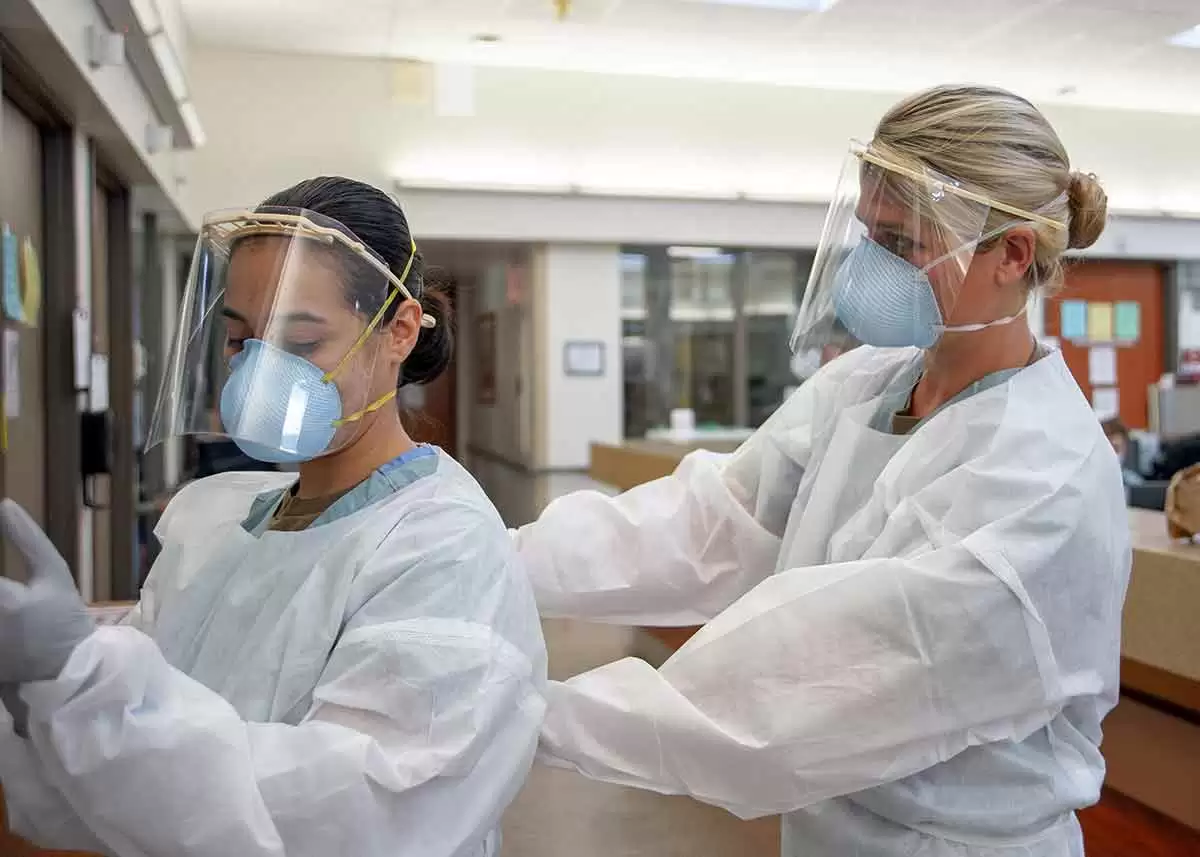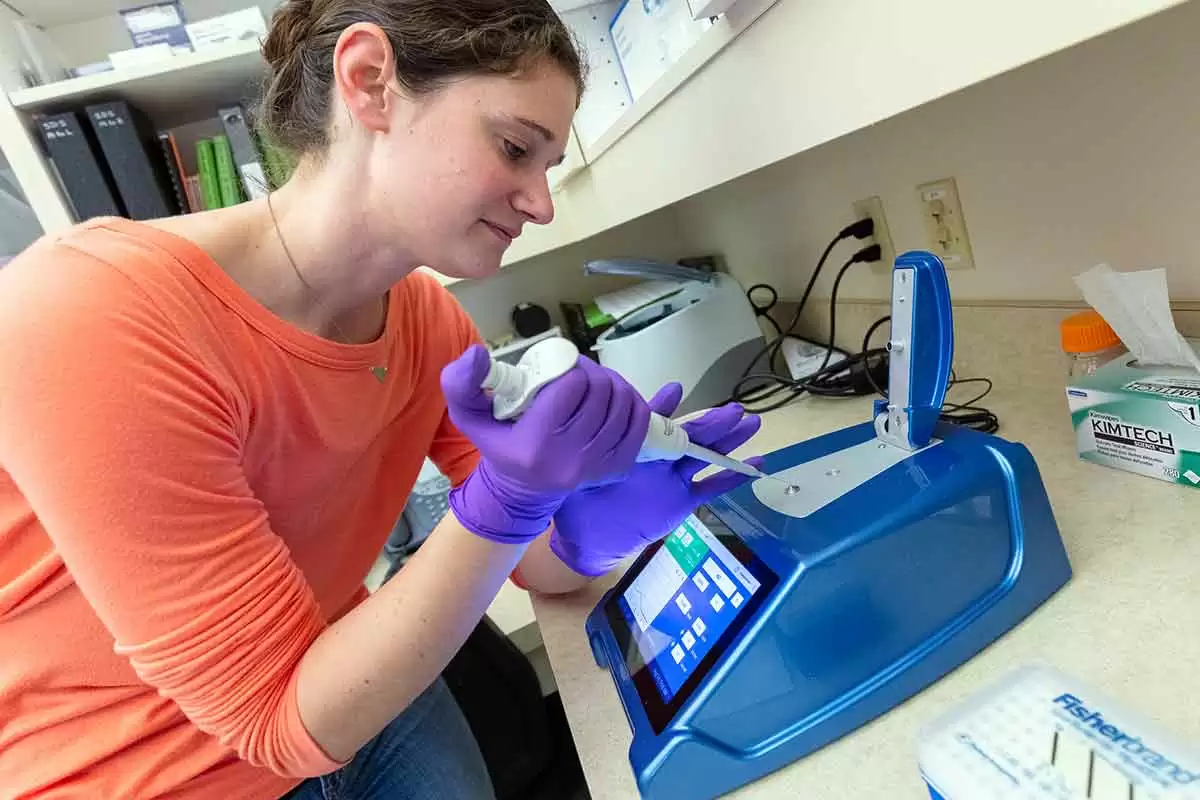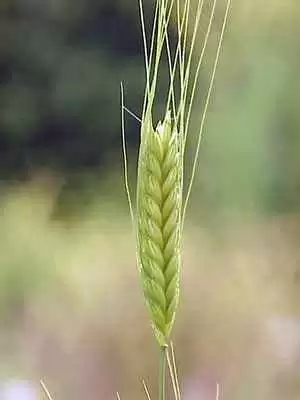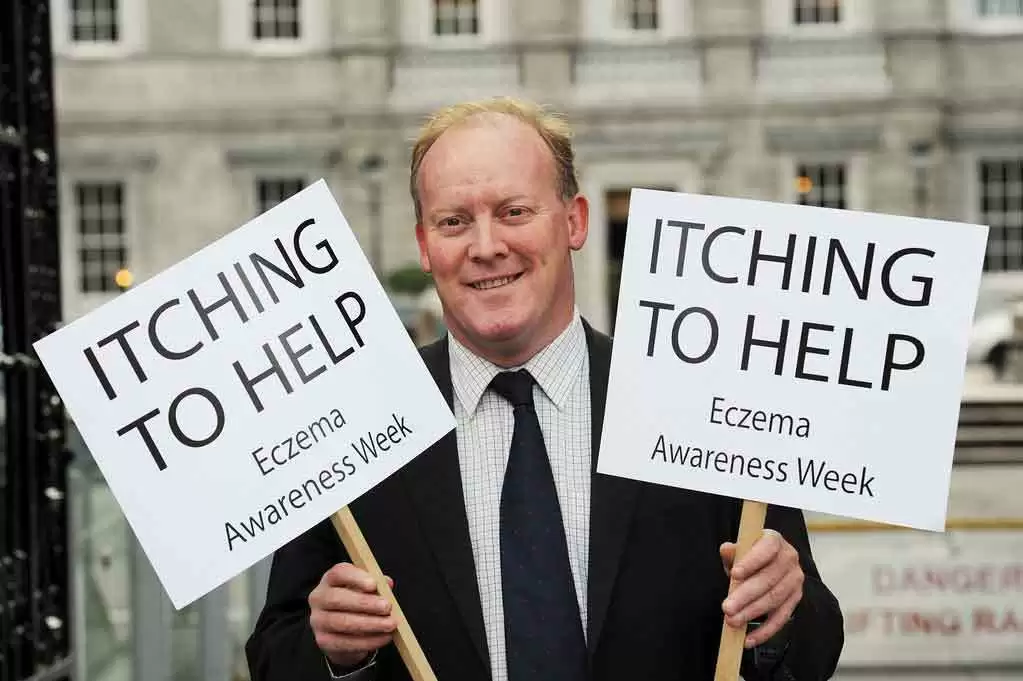-
Welcome to Celiac.com!
You have found your celiac tribe! Join us and ask questions in our forum, share your story, and connect with others.
-
Celiac.com Sponsor (A1):
Celiac.com Sponsor (A1-M):
-
Get Celiac.com Updates:Support Celiac.com!
Search the Community
Showing results for tags 'trigger'.
-
Celiac.com 02/29/2020 - It has been a long and winding road, and around each curve something new has been discovered. I have learned more than I ever thought there was to know about celiac disease. I am forever grateful for having received a celiac diagnosis because it was on that day that I began my journey back to health. On my first day of diagnosis I set out to find out as much as possible about this seemingly rare, but obviously complicated disease. My diagnosis answered a lot of questions for me, yet I was also struck by how many new questions arose. What was the trigger for celiac disease, of course gluten played a part, but what in my past history put me over the edge? What had changed? Did the doctors know so little about the trigger for celiac disease that it was only now becoming clinically identifiable? My last article was an attempt to explain how genetics and environment intersect in celiac disease, but I may have gotten part of it wrong, in part because the International Journal of Celiac Disease (IJCD) got it wrong (at least in my case they did). After the IJCD cited Pellagra in celiacs at a 58% percent rate, I piled on the bandwagon. Quoting “The two diseases can be connected in two aspects. 58% of pellagra patients were shown to have malabsorption and many had intestinal pathology on biopsies.” But we were both wrong I now believe—hold onto that 58% thought, as it will come up later—and I think it's important in helping to confirm my new theory. So where did my pellagra position go wrong? I chose the capstone, pellagra, and not the cornerstone, which may actually be thiamine (B1), and this is easier to do than you might imagine. These diseases have diffuse symptom’s common in their pathogenesis, and only testing can confirm my high suspicion that I may have had undiagnosed, or misdiagnosed, beriberi. Beriberi is is caused by low thiamine (B1). I recently came across research that is 30+ years old that establishes, in mammal’s at least, a trigger for thinning villi titled “Effect of dietary thiamin deficiency on intestinal functions in rats.” To quote from the research “The activities of brush border sucrase, lactase, maltase, alkaline phosphatase, and leucine aminopeptidase were reduced by 42 to 66% in thiamine deficiency, compared to pair-fed controls. Kinetic studies with sucrase and alkaline phosphatase evinced that a decrease in Vmax (61 and 64%, respectively) with no change in Km (33.8 and 4.3 mM, respectively) was responsible for observed impairment in the enzyme activities in thiamine deficiency.” This research leads me to believe that the lactose intolerance so common in those with celiac disease may actually be triggered by thiamine deficiency. I had many of the symptom’s of beriberi, but since I was not in a concentration camp or was not an alcoholic the clinical suspicion was not high enough to have me tested for a thiamine deficiency, despite thiamine and other B vitamins deficiencies that are common in celiac disease. Unfortunately even going on a gluten-free diet does not always correct B vitamin deficiencies, and thiamine, niacin and riboflavin deficiencies have been excluded from most celiac disease studies. One study entitled “Evidence of poor vitamin status in Celiac patients on a gluten-free diet for 10 years" shows that such deficiencies can continue long after diagnosis. Another study entitled “Vitamin and Mineral Deficiencies Are Highly Prevalent in Newly Diagnosed Celiac Disease Patients” says: “Almost all celiac disease-patients (87%) had at least one value below the lower limit of reference.” Testing for certain vitamin deficiencies is standard care following a celiac disease diagnosis, however levels of thiamine (B1), niacin (B3) and riboflavin (B2) are not usually part of a standard screening. It is my hope from reading this that you are alerted to possible B vitamin deficiencies so that you can ask your doctor to have your levels checked, especially if you have been recently diagnosed, or are still struggling with diffuse symptoms years later, for example fatigue, muscle cramps, tingling in your feet and hands, burning feet syndrome, worse at night, etc. You may still be low in thiamine, riboflavin and/or niacin, and doctors often overlook screening for these deficiencies in celiac disease. Celiac Disease is a Genetic Disease with an Environmental Trigger This is where B vitamins come in, as they help us make energy and regulate our environment at the cellular level. It is a 50/50 equation of stress vs. environment combined with genetics, and this can be a hard concept to understand because many people believe that it's all due to DNA. Research from December 2019 entitled “DNA Has Relatively Little Say in Disease Risk (Usually)” says: “In fact, for such (most) diseases, the genetic contribution to disease risk is just 5–10%. There are diseases, however, for which the genetic contribution is about 40–50%. These diseases include Crohn’s disease, celiac disease, and macular degeneration.” B Vitamins, Especially Thiamine (B1), Could be the Missing Pieces to the Puzzle Via the Parasympathetic Nervous System (PNS) the neurotransmitter "acetylcholine" regulates our organ functions throughout the body, and could be why both undiagnosed celiac disease and beriberi affect so many organs in the body. Without enough thiamine our body can’t synthesize enough acetylcholine to regulate it’s organs, which may cause the body to go into high alert mode and trigger a runaway auto-immune reaction like celiac disease. Another study shows a connection with the microvilli that line organs and how they can trigger auto-immune reactions throughout the body. What about that 58% I mentioned earlier? It happens to be the same rate that Japanese sailors developed beriberi, which is what you would expect to find when someone relies on too many carbs, including too much rice or wheat in their diets. It's possible that when the carb happens to be wheat this deficiency could trigger celiac disease, a disease that was discovered by Willem-Karel Dicke in the post WWII Netherlands, or present itself as beriberi when one only eats rice. It took 20 years and countless deaths before the Japanese army discovered what the Japanese navy had learned 20 years earlier, and this article on the “Barley Baron” supports why there is a strong need to enrich gluten-free bread with B vitamins, exactly as regular wheat bread is enriched. According to this article, "(w)e now know that beriberi stems from a lack of vitamin B1, which the body requires for metabolizing carbohydrates and maintaining neurological functions. Without it, a person succumbs to nerve damage and eventually death." So, perhaps a thiamine deficiency is one of the overall environmental triggers of celiac disease in those who have the genetic disposition? Could beriberi trigger celiac disease in susceptible individuals? Hopefully more research will be done to determine this, but in the meantime, get your thiamine levels checked! Additional Resources: https://www.ncbi.nlm.nih.gov/pubmed/23379830 https://www.ncbi.nlm.nih.gov/pubmed/29982183 https://www.ncbi.nlm.nih.gov/pmc/articles/PMC4863043/
- 22 comments
-
- celiac disease
- niacin
-
(and 5 more)
Tagged with:
-
Celiac.com 02/14/2024 - Rising celiac disease rates pose a significant health challenge, yet the environmental triggers behind the rise remain elusive. Among the various potential factors, iron deficiency has emerged as a potential contributor to the development of celiac disease. A recent study, employing Mendelian randomization (MR), sought to investigate the intricate relationship between iron status and the prevalence of celiac disease. Understanding Mendelian Randomization Mendelian randomization (MR) is a powerful method that explores potential causal relationships between an exposure and an outcome. In this case, the researchers delved into the connection between genetic variants associated with iron status and the presence of celiac disease. Research Design The study adopted a two-sample MR approach, utilizing single nucleotide polymorphisms (SNPs) linked to iron status. These SNPs were derived from a meta-analysis of three genome-wide association studies (GWAS). The association between these SNPs and celiac disease was then assessed using GWAS summary statistics from the UK Biobank, which included data from 336,638 white British individuals, 1855 of whom had celiac disease. Key Findings - Higher Iron Status Inversely Related to Risk of Celiac Disease The team identified four SNPs strongly associated with systemic iron status. Notably, these were not linked to known risk factors for celiac disease. The harmonized analysis revealed a compelling association: higher iron status was inversely related to the risk of celiac disease. The odds ratio per one standard deviation increase in serum iron was 0.65, with a 95% confidence interval of 0.47 to 0.91. Crucially, leave-one-out analyses consistently supported these findings, and no single SNP disproportionately influenced the association. Importantly, all three assumptions of MR appeared plausible, strengthening the credibility of the study's conclusions. Conclusion and Implications The study's groundbreaking discovery that genetically lower iron levels are associated with an increased risk of celiac disease holds significant implications for prevention strategies. By shedding light on the potential role of iron status in the development of celiac disease, this research opens avenues for targeted interventions and preventive measures. As the scientific community continues to unravel the complex factors contributing to celiac disease, studies like these pave the way for a deeper understanding of the condition and, ultimately, more effective strategies for its prevention and management. This research not only adds valuable insights to the celiac disease puzzle but also underscores the potential impact of addressing iron status in the broader context of preventive healthcare. Read more in BMJ Open Gastroenterology
- 13 comments
-
- celiac disease
- deficiency
-
(and 4 more)
Tagged with:
-
Celiac.com 08/22/2014 - It is often hard to tell if isolated case reports have anything to contribute to the larger understanding of celiac disease. However, some case reports are enough in themselves to cause reflection, whatever their contribution to the larger scientific understanding may be. For most people with celiac disease, symptoms disappear and healing begins with the adoption of a gluten-free diet. For one 9-year-old girl, however, the battle to beat her symptoms and feel better did not end with a gluten-free diet. The girl had initially complained of non-specific abdominal discomfort, and showed positive blood tests for celiac disease. Duodenal biopsies revealed Marsh 3B histopathology. So, she definitely had celiac disease with corresponding symptoms. Despite following a strict gluten-free diet, the girl continued to have symptoms and show positive blood tests for active disease. Gluten is a common additive in plastics. After some detective work, the team discovered that the child was being exposed to gluten from her orthodontic retainer that contained a plasticized methacrylate polymer. She discontinued its use and her symptoms disappeared and her celiac blood tests returned to normal. This case illustrates that, even for patients on the strictest gluten-free diet, exposure to non-dietary sources of gluten, such as those used to make plastics, dental equipment, and cosmetics, can trigger or exacerbate celiac disease symptoms. This case also emphasizes the importance of ferreting out and removing all possible sources of gluten, including non-dietary, when managing celiac disease. Source: Clin Pediatr (Phila). 2013 Nov;52(11):1034-7. doi: 10.1177/0009922813506254.
-
Celiac.com 06/28/2021 - There is a growing body of data to suggest the intestinal action of SARS-CoV-2, with ciliated cells and intestinal enterocytes serving as target cells, due to high expression of ACE2 and TMPRSS2, could possibly trigger celiac disease in predisposed individuals. Indeed, COVID-19 promotes a “cytokine storm” in the intestinal mucosa, triggering epithelial damage that increases barrier permeability, permitting gliadin to "leak" into the intestinal lamina. However, the possible impact of the SARS-CoV-2 infection, and the resulting disease, on celiac disease rates remains unknown, with no data currently available on the development of systemic disorder, or on long-term outcomes. A team of researchers recently set out to highlight the potential risk of a rise in celiac disease rates among genetically predisposed subjects following SARS-CoV-2 infection, based on several factors which could promote the development of celiac disease. The research team included Chiara Maria Trovato, Monica Montuori, Nicoletta Pietropaoli, and Salvatore Oliva. They are variously affiliated with the Pediatric Gastroenterology and Liver Unit, Maternal and Child Health Department, Sapienza University of Rome, Rome, Italy; and the Hepatology Gastroenterology and Nutrition Unit, "Bambino Gesù" Children Hospital, Rome, Italy. The team used current medical literature to help them hypothesize the role of COVID-19 as a possible trigger for celiac disease development in predisposed individuals. They suggest that genetically predisposed people could be more likely to develop celiac disease following SARS-CoV-2 infection, making COVID-19 a potential driver of increased celiac disease cases in the future. An unexpected rise in celiac cases among genetically predisposed individuals in the wake of the COVID-19 pandemic would support the team's hypothesis. Time will tell if they are right. Stay tuned for more stories regarding COVID-19, celiac disease, and related topics. Read more in the International Journal of Clinical Practice
- 69 comments
-
- celiac
- celiac disease
- (and 5 more)
-
Celiac.com 05/23/2022 - Many people with celiac disease know to be cautious of possible gluten that might be hidden in selected spices and spice blends. However, there's some evidence to support the notion that some people suffering from celiac disease, wheat allergy or non-celiac gluten sensitivity may react to certain spices. A team of researchers recently set out to see if extracts from selected spices, such as caraway, ginger, chili, sweet peppers, anise, sesame, nutmeg and black pepper, might be harmful to people suffering from celiac disease, wheat allergy or non-celiac gluten sensitivity. For each spice, they looked at the reaction of spice proteins with serum antibodies from celiac patients and rabbit antibodies raised to specific glutamine/proline-containing peptides. The research team included Marta Słowianek, Dorota Mańkowska, and Joanna Leszczyńska. They are affiliated with the Institute of General Food Chemistry, Faculty of Biotechnology and Food Sciences, Lodz University of Technology in Lodz, Poland. The team used ELISA, SDS-PAGE and immunoblotting to assess potential adverse reactions. They found that each of the spice extracts triggered some reaction from antibodies found in sera from two celiac patients, and to sera from rabbits that had been sensitized to the specific peptides, QQQPP, PQQQ and QQQP. The QQQP peptide is one of the α-gliadin tetrapeptides that has been shown to have in vivo activity in the pathogenesis of celiac disease, and, according to the researchers "The highest level of immunoreactivity to anti-QQQP antibodies was reported in sweet (1054 ± 22) and chili pepper (698 ± 9), and "The most intense reactions in anti-QQQPP rabbit serum occurred with anise (61.8 kDa) protein and caraway (58.7, 53.9 and 21 kDa) proteins. The largest number of proteins that reacted with anti-QQQPP antibodies within a single group was among sesame proteins." They noted that these peptides shared sequences that might be included in active epitopes for celiac disease and wheat allergy. The reactions seen by the team indicate that spice proteins could trigger adverse reactions in celiac patients, patients with various wheat allergies or with non-celiac gluten sensitivity, and the study's conclusions are: The researchers are calling for further study to better determine the likelihood of their hypothesis. Certainly, it would be a big deal if research shows that certain spices trigger reactions in people with celiac disease and non-celiac gluten sensitivity. Right now, the evidence does not support that idea enough to warrant any concern or action. Stay tune for more on this and related stories. Read more in Food & Agricultural Immunology
- 13 comments
-
- celiac disease
- proteins
-
(and 3 more)
Tagged with:
-
Celiac.com 07/31/2021 - Although my theory on the ultimate, underlying cause if idiopathic epilepsy (viruses) is only a theory (backed by mounds of data), the response of epileptic dogs (and people) to the elimination diet I propose is far from theoretical. It has halted seizures in even the most refractory of cases time and time again. It has stopped seizures overnight in dogs that were about to be euthanatized by board-certified veterinarians for “non-responsive” epilepsy. It has eliminated seizures in people with a lifetime of seizures, ranging from children to adults in their 40’s and 50’s, including those with head trauma-induced epilepsy. The response of theses individuals, in addition to the fact that there are more than 24 known viral causes of seizures, has led to my “theory” of chronic latent viruses being the ultimate reasons why one individual has epilepsy and the one next to them does not. This is no more far-fetched than what we know about cancer...viral information embedded in our very genome that is “unleashed” once the circumstances are correct. (Once we have done enough wrong to ourselves and our pets, actually.) I guess we could use the term “epileptogens” rather than carcinogens when discussing the things that cause epilepsy to begin between 6 months and 6 years of age, 2-14 years, and then again, after age 65 in people). Why the delay? Doesn’t that pattern in people smack of the same things that cause leukemia? My ultimate “cause” of epilepsy theory is driven by viral agents but the dietary management of these patients is a 6.5 year fact, supported by similar, published, and well-publicized work in human medical research into the ketogenic and now the “modified Atkins” diets. They are coming close to the real answer, which is my diet, but they are woefully deficient in what they are eliminating. The step from ketosis (for which NO healthy individual should ever volunteer) to a non-ketotic diet found in the “modified Atkin’s” is a step in the right direction. Are you familiar with these dietary developments in human medicine, studied extensively at John’s Hopkins and The Mayo Clinic? I’m sure you must be. What is it that they are eliminating that is making a difference in 30-50% of individuals to which they apply it? Why not 60, 70 or 90%. Why not 100% like we are experiencing. Yes 100% of patients with idiopathic epilepsy that I have been involved with have had a notable response, the majority of which stopped seizing completely. 100%. That is a stiff claim, isn’t it? It’s true, though. And it is the wellspring of the passion I have for this topic and why I spend my time writing on forums instead of playing golf. Why not speak at ACVIM meetings? Why not write in peer-reviewed journals? First, I am a solitary practitioner. Other than my internship at Angell Memorial, I have no clout. And believe me when I say that I tried to reach people in high places. Academia is an ivory tower that is difficult to approach, especially in human medicine. Thank God (literally) there are alternatives to simply trying to change the mind of the two professions before any help can be rendered to the masses. Thank God (again, literally) that the afflicted can now be their own best advocates and find answers on their own. Thank God for the Internet. The time has come for medicine to change. Our blind approach of masking symptoms with drugs has come to an end. Seizures serve a purpose just like every other symptom that occurs in our body and until we see that, we will never be better at curing disease that we are now, and our success is dismal at this point. Our limited understanding of nutrition is appalling. How any educated person can say that diet has nothing to do with epilepsy (or any other medical condition for that matter) is beyond me but that has been the response of almost every board certified vet or practitioner that has been presented with this idea by an interested client...just before their seizures were stopped by changes to the diet. The “startling” fact is that nutrition has everything to do with our body running on the nutrients it acquires from food. We don’t get proteins, fats, vitamins, and minerals from air, do we? Cellular metabolism and enzyme systems don’t run on oxygen alone, do they? So how could a board-certified doctor, human or veterinary, say that “nutrition has nothing to do with seizures”??? Do you sense my frustration? I have spent the past 7 years trying to get this word out to colleagues and doctors alike. My head is bloody from hitting it so hard against that wall. But the progress I have made in the private sector has been astounding. Now my time has come to share it with the professionals. If I waited to hear from my or the human medical profession, I would have died waiting. Google “DogtorJ” and you’ll see where I’ve been (other than car forums). I spoke at two AHVMA conferences. I recently spoke at an international conference of MDs. And I will be speaking at the upcoming NAVC conference in Orlando in January. Dr. Jean Dodds and I are in total agreement on this approach and correspond very regularly. I have doctors at both Johns Hopkins and Mayo interested in this work, and the director of integrative medicine at Mayo is trying to get an NIH grant to study it. Maybe this approach has been backwards when viewed from inside the ivory tower, but this is becoming the mode these days. Most of us are aware of the public’s rising level of dissatisfaction with medical care. If medicine was a government a revolution would be in the offing. The doctor jokes are exceeding the lawyer jokes now. My clients regularly volunteer to me how much they “hate” the medical profession. I didn’t think I would see that day. Why are they so vehement about their disdain for “us”? Simply put, they are waking up. They see the absurdity of taking fever-reducers for a fever ‘caused by a virus or bacteria because they intuitively know that the fever serves a vital purpose in our healing. Similarly, they don’t see the logic in treating cancer with more carcinogens. They don’t understand why you would treat a condition like MS or lupus that results in individuals with weakened immune systems with immunosuppressive drugs. The scary thing is that these treatments eem to make sense to those who prescribe those “remedies”, just as they did to me for 21 years. Now that’s a scary and humbling thought. It’s time for us all to wake up. And, it’s time for us to put aside our pompous attitudes, imagining that we know so much when we really understand so little. Hey, “idiopathic” is our favorite word. How can we be so smug when we know that this is true? Even worse, how can we let a word like that shut off our brains when there is a finite number of causes for any disease we care to discuss. We hold up that word like a banner while casting aside ideas that actually work. I do understand how the system works. Again, thank God there are alternatives to that system. Otherwise, conventional (internal) medicine would lead us all into our graves. Granted, they often squeeze another 15 years out of a human life using drugs, controlling heart disease and the like. But they have done nothing to halt the incidence of heart disease, immune-mediated diseases, and cancer. It has simply been a race to determine this year’s number one killer. It is time to actually prevent and even CURE these conditions. Our disbelief that this can be done only illustrates how far we have strayed from the proper path of the healing arts.
-
Celiac.com 05/20/2021 - Celiac disease is the result of complex interactions of environmental, genetic, and immunological factors. Celiac disease is now considered a prototype of T-cell-mediated disease marked by gluten intolerance, and the targeted destruction of enterocytes by T-cell receptor αβ intraepithelial lymphocytes. However, the latest research indicates that innate immune system activation is necessary to trigger a gluten-specific T helper-1 response. Mast cells play a key role in innate immune response, and contribute to the pathogenesis of numerous diseases. A team of researchers recently set out to examine the role of mast cells in celiac disease. The research team included Barbara Frossi, Marco De Carli, and Antonino Calabrò. They are variously affiliated with the Department of Medical and Biological Science, University of Udine, in Udine, Italy; the Second Unit of Internal Medicine, University Hospital of Udine, in Udine, Italy; the Department of Experimental and Clinical Biomedical Sciences “Mario Serio,” University Hospital of Florence, Florence, Italy; and the Tuscany Referral Center for Adult Coeliac Disease, AOU Careggi in Florence, Italy. They reviewed the results of studies on the role of mast cells in the development and trajectory of celiac disease, demonstrating that these cells increase in number as the disease progresses, and promote inflammation, and the researchers conclude: "Considering that mast cells are at the forefront in the interaction with the environment due to their privileged position within the mucosal tissue, the ability of mast cells to respond to gliadin peptides accounts firstly for a direct role of mast cells in the onset of celiac disease." Read their full report in the International Journal of Molecular Science.
- 8 comments
-
- cause
- celiac disease
-
(and 2 more)
Tagged with:
-
Celiac.com 11/11/2014 - There have been claims that certain strains of wheat, especially ancient strains, such as einkorn, do not trigger adverse reactions in people with celiac disease, or that they trigger less severe reactions. Until now, researchers haven't been able to say for certain that celiac disease patients react adversely to all varieties of wheat, or whether there may be differences in reactions to certain strains. A research team recently evaluated the safety of ancient strains of wheat in celiac disease. The researchers included Tanja Šuligojemailemail, Armando Gregorinidemail, Mariastella Colombaeemail, H. Julia Elliscemail, and Paul J. Ciclitirac To get a better idea of the nature of celiac factions to wheat, the team studied seven Triticum accessions showing different origin (ancient/modern) and ploidy (di-, tetra- hexaploid). In all, they tested ancient Triticum monococcum precoce (AA genome) and Triticum speltoides (BB genome), accessions of Triticum turgidum durum (AABB genome) including two ancient (Graziella Ra and Kamut) and two modern (Senatore Cappelli and Svevo) durum strains of wheat and Triticum aestivum compactum (AABBDD genome). They evaluated small intestinal gluten-specific T-cell lines generated from 13 celiac patients with wheat accessions by proliferation assays. They found that all strains of wheat they tested triggered a range of adverse responses, independent of ploidy or ancient/modern origin. Based on these results, they suggest that all strains of wheat, even ancient strains previously suggested to be low or devoid of celiac toxicity, should be tested for immunogenicity using gluten-specific T-cell lines from multiple celiac patients rather than gluten-specific clones to assess their potential toxicity. They also emphasize the need for celiac patients to follow a strict gluten-free diet, including avoidance of ancient strains of wheat. Source: Clin Nutr. 2013 Dec;32(6):1043-9. doi: 10.1016/j.clnu.2013.02.003
-
Celiac.com 01/10/2019 - Microbial transglutaminase is an enzyme that is commonly used by food manufacturers to improve product quality and increase shelf life. Transglutaminase is commonly used in the meat industry to add value to meat by allowing smaller pieces of meat, fish, or meat product to be glued together. The result is a large chunk of virtually intact piece of meat or fish that looks like a single chunk. Transglutaminase is rarely labeled and usually invisible to consumers. According to the food website, Delishably, “"Meat glue" is industry standard, and chances are if you eat meat, or even tofu, you're consuming this binding agent on a monthly, if not weekly, basis.” Because it is functionally similar to the tTg, microbial transglutaminase acts like glue, binding gliadin peptides together to form neo-complexes that trigger an immune response, and may also trigger a pathogenic response in people with celiac disease. Even when it lacks sequence identity, microbial transglutaminase functionally mimics endogenous tissue transglutaminase, which researchers understand to be an autoantigen of celiac disease and a key actor in genesis and progression of celiac disease. A team of researchers recently set out to review the effects of microbial transglutaminase in children with celiac disease. Researchers Matthias Torsten and Lerner Aaron are affiliated with AESKU, KIPP Institute, Wendelsheim, Germany, and the Rappaport School of Medicine at the Technion-Israel Institute of Technology in Haifa, Israel. In their review, they report on the enzyme’s characteristics, exogenous intestinal sources, its ability to cross-link to gluten or gliadin, and to thus turn seemingly harmless proteins into disease triggering ones. Their report relays several observations about the immunogenicity of microbial transglutaminase cross-linked complexes in celiac patients, as well as summarizing their pathogenicity, and highlighting possible risks for the gluten dependent conditions. Their stated hope is to promote additional research into the mechanics and disease-triggering channels underlying the gliadin cross linked enzyme and its promotion of celiac disease. The team anticipates that corroboration of their observations could reveal a new environmental trigger for the initiation of celiac disease. They are calling for further study, particularly of the physical mechanics of the process. The team’s research could lead to new understandings of the genesis of celiac disease in certain patients. Such a development would be very helpful to celiac disease research and understanding, in general, and could lead to new diagnosis and treatment options in the future. Sources: Front. Pediatr., 11 December 2018 | https://doi.org/10.3389/fped.2018.00389 Sciencedirect.com
-

Eczema: Cure it! – It is Triggered by Gluten
Dr. Rodney Ford M.D. posted an article in Summer 2008 Issue
Celiac.com 10/03/2020 - Did you know that eczema may be triggered by gluten? Well it often is! This is one of the most exciting and biggest breakthroughs my research into the harm caused by gluten. A mum wrote to me: “I used to get eczema on my knees which cleared up on a gluten-free diet. My mother knows when she has been contaminated with gluten as she gets eczema all over her arms, and my sister gets it on her neck. It is strange that eczema is localized on different places for each of us!” After beginning gluten-free eating, she recognized that gluten aggravated her eczema – and that it probably caused it in the first place. She is not alone in her observations. I have seen this myself and many others have told me similar stories. I am a pediatric allergist and have investigated children with food allergies for 30 years. I am also a gastroenterologist, and have studied children with celiac disease over all this time. Naturally, I began to wonder if gluten was causing more harm than just producing gut damage: I wondered if it was also causing eczema? I soon discovered that it was! I noticed that many children who had celiac disease also had eczema. And, when they went onto a gluten-free diet their eczema usually got better. Of course I already knew about Dermatitis Herpetiformis (an itchy skin condition provoked by gluten), but nobody had previously documented that gluten could cause eczema. The next step was to test all my chronic eczema children for gluten reactions. And guess what! I found that 75% of these children with eczema had an abnormal gluten blood test (their IgG-gliadin antibodies were high). Logically, I suggested that these children try a gluten-free diet. They did, and they got very much better. This excited me. I used to struggle to help these children who suffered with itching, bleeding skin and disturbed sleep. Now, when a child with severe eczema comes into my clinic, at last I can offer hope of a cure. It has revolutionized my practice and the lives of these families. Yes! I have discovered that the majority of eczema in children (and adults) is triggered by gluten. This is a staggering result. Think of how many people are suffering unnecessarily from eczema that could be mostly cured by a gluten free diet. Eczema is part of “The Gluten Syndrome” which comprises gut, skin and nerve problems caused by gluten. I have written all about this is my new book “Eczema! Cure it!” You can get this on the webpage. Cheers, Dr Rodney Ford.- 2 comments
-
- celiac disease
- eczema
- (and 4 more)
-
Celiac.com 09/28/2020 - Biomedical researchers Tuulia Hyötyläinen and Matej Orešič, at Örebro University, have published two studies connecting highly fluorinated chemicals to autoimmune diseases in children. In the studies, Hyötyläinen and Orešič, link per- and polyfluoroalkyl substances (PFAS's) – with type 1 diabetes and celiac disease, or gluten intolerance in children. PFAS are man-made chemicals. There are about 5,000 PFAS, and they are used in numerous consumer products, such as furniture, adhesives, food packaging, coatings in clothing, and even fire-fighting foam. In the celiac disease study, Hyötyläinen and Orešič show a connection between PFAS and celiac disease, by demonstrating that "high exposure to PFAS in the womb and in first years of life can accelerate the development of celiac disease in children," says Hyötyläinen. The studies appear in Environment Research. Their conclusions are based on analysis of the metabolization of small molecules in the body, and analysis of PFAS, coupled with a system's biology approach to integration of complex study data, gathered from expectant mothers and children. "Exposure to harmful chemicals in early life, including prenatally, may offer an explanation for the changing incidence of these autoimmune diseases in developed countries and can be connected to other health risks," says Matej Orešič. In Sweden and other Nordic countries, as in many other modern countries, type 1 diabetes is one of the most common chronic diseases among children, with cases rising sharply in the last few decades. Interestingly, the incidence curve has flattened in the last several years, which may result from stricter PFAS regulation in recent years. Researchers know that some children have genes that increase their likelihood of developing type 1 diabetes, but only about one in ten of them actually go on to develop diabetes. This strongly indicates an environmental factor as a potential trigger for autoimmune disease development. Both viral infections and diet have been singled out as potential triggers. In their recent work, Hyötyläinen and Orešič describe how PFAS impacts lipid metabolism and risk of type 1 diabetes in new-born children. Their study data shows that these chemicals are easily passed from exposed expectant mothers to the fetus. Moreover, it is known that "children exposed to the high levels of PFAS during the prenatal stage have a certain lipid profile...associated with an increased risk for type 1 diabetes and the development of the disease in children," explains Orešič. The team's findings are confirmed by another clinical study on children at-risk for type1 diabetes, along with two studies on experimental models of type 1 diabetes in mice. This is not the first study to show links between exposure to chemicals and the development of celiac disease, and other certain auto-immune conditions. The implications of the research for the understanding of type 1 diabetes and celiac disease in children remains unclear, as does information on safe or unsafe levels of PFAS exposure in humans. Certainly further study and consideration of the issue by researchers and clinicians is welcome. Stay tuned for more on the role of pesticide and chemical exposure in the development of celiac disease and other auto-immune conditions, including type 1 diabetes. Read more at Medicalxpress.com
- 1 comment
-
- celiac disease
- chemicals
-
(and 5 more)
Tagged with:
-
Celiac.com 06/22/2020 - Since 2004 data collected prospectively by The Environmental Determinants of Diabetes in the Young (TEDDY) study group has helped researchers to better understand T1D, and associated autoimmune conditions, like celiac disease. TEDDY is funded by the National Institute of Diabetes and Digestive and Kidney Diseases (NIDDK). Celiac disease and T1D share a number of genetic factors. Seeking to explain why some children with high-risk genes develop T1D or celiac disease, while most do not, the TEDDY team monitors study subjects for both T1D and celiac disease. TEDDY research has already shown that genetically predisposed children who eat gluten at, or above, certain levels in early childhood, had higher rates of celiac disease. "An interesting finding from TEDDY has been how early the autoimmune destruction of insulin-producing cells begins–often in the initial two years of life," said study TEDDY co-chair Marian Rewers, MD, PhD, a professor of pediatrics and medicine and executive director of the Barbara Davis Center for Diabetes at the University of Colorado School of Medicine. The TEDDY study follows infants with high T1D risk factors for 15 years to look for certain beta-cell autoantibodies and diabetes. TEDDY has also looked at biomarkers that indicate faster or slower progression to diabetes after autoimmune destruction begins. "While T1D and celiac disease share a lot of genetic characteristics, there are intriguing differences in the ways these diseases develop and progress," says Dr. Rewers, adding that "TEDDY research and discovery will help drive the "design of future trials to prevent both T1D and celiac disease." TEDDY is looking to uncover viruses and nutritional factors that work with genes to initiate destruction of the beta cells by the immune system, which is signaled by the appearance of islet autoantibodies. Ultimately, TEDDY investigators are looking to uncover a way to prevent both diabetes and celiac disease in children. The latest information from TEDDY highlights potential "triggers" for the autoimmune process that generates type 1 diabetes (T1D), and how those triggers engage in children with with genetic risk factors for T1D. That information is highlighted in the "Update from the TEDDY Study" symposium today at the American Diabetes Association's (ADA's) 80th Virtual Scientific Sessions. Among TEDDY's latest findings are two new papers, Longitudinal Metabolome-Wide Signals Prior to the Appearance of a First Islet Autoantibody in Children Participating in the TEDDY Study; and Distinct Growth Phases in Early Life Associated With the Risk of Type 1 Diabetes. Read the original press release at PRNewswire.com. Stay tuned for more on TEDDY and related stories.
- 16 comments
-
- celaic disease
- celiac
-
(and 7 more)
Tagged with:
-

Does Vitamin D Play a Role in Celiac Disease Onset?
Scott Adams posted an article in Latest Research
Celiac.com 07/06/2020 - Although researchers are just beginning to learn about the role of vitamin D on the immune system and on infection, recent studies point to vitamin D as an immune system regulator and signaling component. Over 900 genes are reportedly regulated by vitamin D. Researchers are investigating numerous potential influences of Vitamin D on chronic diseases such as diabetes, celiac disease and cardiovascular, neurological, and autoimmune diseases. A team of researchers recently set out to define the possible role of vitamin D in celiac disease development, taking into account potential links among vitamin D, the immune system and celiac disease. The research team included Giorgia Vici, Dalia Camilletti, and Valeria Polzonetti. They are variously affiliated with the School of Biosciences and Veterinary Medicine, University of Camerino in Camerino, Italy. Beside supporting and protecting the skeletal system by assisting in calcium production, researchers have described additional potential roles for vitamin D. Studies have shown that vitamin D may be a key player in inflammation and immunity, and in controlling the intestinal mucosa barrier. Researchers suspect that vitamin D influences numerous conditions, such as immune-mediated diseases, and due to its involvement in immune modulation it could be a major factor in the onset of celiac disease. Celiac disease is a chronic auto-immune condition that often results in damage to the small intestine when those with it consume gluten proteins. Researchers have begun to understand that other factors also play a role in the development of celiac disease, and recent vitamin D research has shown that tissues and cells that have nothing to do with mineral and bone metabolism present a vitamin D receptor (VDR) and vitamin D-activating enzymes. Researchers have noted that the VDR expresses itself as antigen-presenting cells and lymphocytes, which indicates that vitamin D is a key modulator of immune and inflammation mechanisms, and suggests that VDR gene polymorphisms function as markers of either resistance or susceptibility to autoimmune diseases. For these reasons, the researchers call for clarifying the role of vitamin D in the onset of celiac disease. They are calling for international studies to assess the variables that can influence celiac onset, such as vitamin D levels of pregnant women, vitamin D supplementation and/or UV exposure. Better understanding of the role played by vitamin D in celiac disease could lead the way to new strategies for preventing celiac disease. Stay tuned for more on the role of vitamin D in celiac disease onset, treatment, and prevention. Read more in Nutrients. 2020 Apr; 12(4): 1051.doi: 10.3390/nu12041051- 13 comments
-
- celiac
- celiac disease
- (and 4 more)
-
Celiac.com 06/19/2020 (Revised 06/24/2020) - It is not uncommon to have received blood testing from your doctor to see if you have celiac disease, and it comes back negative, when in fact your body is actually having a problem and you are on the celiac spectrum. The tests most doctors use to determine whether or not someone has celiac disease are very accurate for end stage celiac disease-after you have total villous atrophy, but not earlier stages of the disease (1). In those earlier situations, these tests often come back negative, even though you truly have a problem and are reacting to wheat moving towards total villous atrophy (1, 2, 3, 4, 5). It’s the wrong test. If you have an earlier stage in terms of the amount of damage incurred, the standard blood tests can be wrong over 70% of the time giving false negatives Standard blood tests for celiac disease have been extremely accurate and dependable if a person has total villous atrophy celiac disease. However, the accuracy of the blood test results for the two accepted blood markers (Endomysium and Tissue Transglutaminase) with anything less than total villous atrophy drops tremendously (to as low as being wrong 7 out of 10 times) (8,9). The reason these tests are often wrong in some people is that the research to validate the test used subjects who all had been diagnosed with celiac disease which by definition was total villous atrophy (Marsh IIIa,b,c). The earlier stages, Marsh 1 and 2 by most are considered ‘potential celiac disease’. So, when researchers were looking to validate if their blood tests were accurate in diagnosing celiac disease, they tested the blood of people diagnosed with celiac disease (total villous atrophy). And in that scenario, endomysium and tissue transglutaminase are highly accurate. from Lerner A, Jeremias P, Neidhöfer S, Matthias T (2017) Comparison of the Reliability of 17 Celiac Disease Associated Bio-Markers to Reflect Intestinal Damage. J Clin Cell Immunol 8: 486. from Lerner A, Jeremias P, Neidhöfer S, Matthias T (2017) Comparison of the Reliability of 17 Celiac Disease Associated Bio-Markers to Reflect Intestinal Damage. J Clin Cell Immunol 8: 486. Why? Celiac disease is defined as total villous atrophy. However, you don’t just magically go to sleep one night fine and wake up the next morning with total villous atrophy celiac disease. This disease, like all diseases, needs to be looked at more as a spectrum. That’s why Prof. Michael Marsh identified the spectrum of celiac disease development (Marsh I, II, III a, b, c). Bottom line? The test for total villous atrophy celiac disease (Marsh III a, b, c) are not the tests to rely on for earlier phases of the spectrum (Marsh I, II). The end result is many people have been told they do not have celiac disease and wheat is not a problem continue eating this food that is leading them further down the path of autoimmune disease. And of course, the tests for celiac disease are NOT the tests for the spectrum of Wheat Related Disorders (9). Predictive autoimmunity can tell you what areas of your body are under attack. Identifying an autoimmune mechanism early in the spectrum of development gives an opportunity to address it before there is so much tissue damage, now you have an autoimmune disease. Autoimmunity is the number 3 cause of death and highly preventable. If you could peek inside and determine what is going on before it does irreparable damage, it gives you a window of opportunity to address the problem early on and change the course of your health. This is called Predictive Autoimmunity (30). Identifying that you are on the celiac spectrum at Marsh I, gives you the opportunity to take action (gluten-free diet) and prevent progressing to Marsh III total villous atrophy. So the tests that are highly accurate for Marsh III are the wrong tests for Marsh I and II. They may be helpful and they may be misleading Gluten, Autoimmunity, and Your Gut Dr. Alessio Fasano is the chair of pediatric gastroenterology at Mass. General Hospital, Harvard, and director of Mucosal Immunology and Biology Research Center at Mass General Hospital for Children. He has done extensive research in the area of mucosal lining of the gut. He discovered, in the early 2000’s, a trilogy present in the development of autoimmunity: genetics, triggers, and intestinal permeability. (10) With celiac, we all know this – DQ2/DQ8, gluten, leaky gut = vulnerability to developing celiac disease. In the last 15 years, research has continued to expand to include two more features - thus a total of 5 components in the development of autoimmune diseases. In addition to genetics, environmental triggers and intestinal permeability, we now know that a dysbiotic microbiome and a systemic inflammatory immune response are involved. (11) This is important in our understanding of treatment. You can arrest the development of autoimmunity by healing the gut and addressing intestinal permeability. The majority of people with leaky gut do not show symptoms in the gut. A leaky gut spews out macromolecules into the blood stream that travel throughout your body that are considered foreign objects that your immune system will protect you from. And the resulting systemic inflammation from a leaky gut can affect any area of your body. And what are the most common triggers that will trigger a leaky gut? Gluten and small intestinalal bacteria overload. (11) Dangers of a Gluten-Free Diet Now this is a ‘Big Picture’ concept, but when you read the science it is clear that no one can fully digest the proteins in wheat (11, 12, 13, 14). It is indigestible to all humans, and in every single person causes a transient state of intestinal permeability (12, 13). Having said that, not everything about wheat is bad. Wheat (78%) and barley (3%) account for 78 - 81% of total prebiotics in the Western diet (14, 15, 16). When you remove wheat from your diet, a large percentage of the good bacteria will likely starve. This may be a contributing factor to the jaw-dropping statistic from the largest study ever done on mortality and celiac disease, that being diagnosed with celiac disease is associated with an 86% increased risk of mortality from a cardiovascular incident within 1 year (18). Just by being diagnosed. As far as I know, no one has pursued further research on this fact. What is different after diagnosis? People go on a gluten-free diet. What else? For most people, nothing else-they just stat eating gluten-free foods. You MUST be conscious of replacing the loss of prebiotics in your diet. Replacing wheat-based products with gluten-free products is a landmine. The vast majority of gluten-free products do not have prebiotic fibre, are not enriched, and are just tasty white paste. There’s nothing wrong with a gluten-free blueberry muffin once in a while, or gluten-free pasta on occasion. But these products are not healthy for you and can NOT be the cornerstone of your new diet. Be mindful of this at the onset of starting your gluten-free diet, so that you replenish your body with the necessary prebiotic nutrients your microbiome needs to increase diversity and balance. (14) So many people make the same newbie mistakes of just shopping in the gluten-free aisle and walk away with gluten-free cookies and snacks. I’m sorry to say that those are pretty much just as unhealthy, or worse, than the gluten versions. They just lack the antigen gluten. You need to look towards the produce aisle, vary your food choices from day to day, eat a wide variety in colour and types of organic fruits and vegetables, eat fermented foods rich in probiotics, and feed that good bacteria in your gut with foods that are prebiotics (root vegetables daily). I highly recommend finding a Certified Gluten-free Practitioner (CGP) who has received extensive training in celiac disease, gluten sensitivities, wheat-related disorders and autoimmunity. That is the most comprehensive training out there in this area. Find a CGP in your area-they’re all over the world, and most do on-line private consults. Addressing the intestinal permeability that has been developing with every exposure to wheat (12), within 5 minutes of wheat coming out of the stomach into the small intestine (20), is a game-changer in your overall health. There are over 300 autoimmune conditions. With the ‘Gateway’ in the development of autoimmune diseases being intestinal permeability, addressing this, and focusing on healing the gut can bring big rewards. Heal the Gut Identify and eliminate your triggers. Reduce inflammation. Reduce stress. The following supplements all have many studies showing their value in addressing intestinal permeability: Glutamine (21), Fish oils (22), Vitamin D (23), Colostrum (24), Turmeric (25), Pre (26) and Probiotics (27). Each of these basic nutrients modulates (has their hands on the steering wheel) of genes to reduce inflammation achieving a similar end goal, but they each work in different ways. Using a pleiotropic approach ensures success (great scrabble word-pleiotropic-means ‘all roads lead to Rome’. When you have a gluten-related disorder, the treatment is a strict gluten-free diet - without exception. Don’t let the treatment be the trigger for more problems. I’m known for the saying “You can’t be a little pregnant, you can’t have a little gluten” (if your immune system is activated fighting any of the peptides of wheat). Cheating once-per-month increases your risk of early death 6-fold! (19) Take measures to protect yourself against nutritional and vitamin deficiencies associated with a gluten-free diet. The benefits of a ‘Coach’ to learn the correct basics through this transition cannot be overemphasized (28, 29). A CGP, Nutritionist, trained Registered Dietician, Health Coach, … are invaluable in you learning the basics of this transition into a new way of eating. Eat different colors of the rainbow at every meal, every day. It will help restore balance to your gut health and rebalance your immune system. If you’re going to do this alone, avoid wheat (gluten), dairy, and added sugar for a month. Eat nutrient dense organic foods, such as quinoa, amaranth, vegetables, and quality meats. Gauge how you feel. Is your weight better managed? Do your hands and feet no longer feel cold? Are you able to think more clearly? If so, continue to eliminate those offending foods and eat a varied diet rich in nutrients. If you reintroduce and notice a problem, now you know those were foods that are inflammatory to you. And be careful of your tricky mind. Humans are the only species on the planet that finds something that works, and they stop doing it! References: Lerner A, Jeremias P, Neidhöfer S, Matthias T (2017) Comparison of the Reliability of 17 Celiac Disease Associated Bio-Markers to Reflect Intestinal Damage. J Clin Cell Immunol 8: 486 Immunoglobulin A autoantibodies against transglutaminase 2 in the small intestinal mucosa predict forthcoming coeliac disease. Salmi TT, Collin P, Järvinen O, Haimila K, Partanen J, Laurila K, Korponay-Szabo IR, Huhtala H, Reunala T, Mäki M, Kaukinen K.Aliment Pharmacol Ther. 2006 Aug 1;24(3):541-52 Lack of correlation of degree of villous atrophy with severity of clinical presentation of coeliac disease. Brar P, Kwon GY, Egbuna II, Holleran S, Ramakrishnan R, Bhagat G, Green PH.Dig Liver Dis. 2007 Jan;39(1):26-9 Seronegative celiac disease: increased prevalence with lesser degrees of villous atrophy. Abrams JA, Diamond B, Rotterdam H, Green PH.Dig Dis Sci. 2004 Apr;49(4):546-50 Utility in clinical practice of immunoglobulin a anti-tissue transglutaminase antibody for the diagnosis of celiac disease. Abrams JA, Brar P, Diamond B, Rotterdam H, Green PH.Clin Gastroenterol Hepatol. 2006 Jun;4(6):726-30 Tests for Serum Transglutaminase and Endomysial Antibodies Do Not Detect Most Patients With Celiac Disease and Persistent Villous Atrophy on Gluten-free Diets: a Meta-analysis. Silvester JA, Kurada S, Szwajcer A, Kelly CP, Leffler DA, Duerksen DR.Gastroenterology. 2017 Sep;153(3):689-701 Screening for celiac disease.Lebwohl B, Green PH.N Engl J Med. 2003 Oct 23;349 (17):1673-4 Joint BAPEN and British Society of Gastroenterology Symposium on 'Coeliac disease: basics and controversies'. Coeliac disease in the twenty-first century. Dickey W. Proc Nutr Soc. 2009 Aug;68(3):234-41. Mechanisms of disease: the role of intestinal barrier function in the pathogenesis of gastrointestinal autoimmune diseases. Fasano A, Shea-Donohue T. Nat Clin Pract Gastroenterol Hepatol. 2005 Sep;2(9):416-22. Fasano A. All disease begins in the (leaky) gut: role of zonulin-mediated gut permeability in the pathogenesis of some chronic inflammatory diseases. F1000Res. 2020;9:F1000 Faculty Rev-69. Published 2020 Jan 31. doi:10.12688/f1000research.20510.1. Celiac Disease and Nonceliac Gluten Sensitivity: A Review. Leonard MM, Sapone A, Catassi C, Fasano A. JAMA. 2017 Aug 15;318(7):647-656. Effect of gliadin on permeability of intestinal biopsy explants from celiac disease patients and patients with non-celiac gluten sensitivity. Hollon J, Puppa EL, Greenwald B, Goldberg E, Guerrerio A, Fasano A.Nutrients. 2015 Feb 27;7(3):1565-76. Lerner A, O'Bryan T, Matthias T. Navigating the Gluten-Free Boom: The Dark Side of Gluten Free Diet. Front Pediatr. 2019;7:414. Published 2019 Oct 15. Effects of a gluten-free diet on gut microbiota and immune function in healthy adult Human subjects - comment by Jackson. Jackson FW. Br J Nutr. 2010 Sep;104(5):773. On the presence of Inulin and Oligofructose as natural ingredients in the western diet Jan Van Loo , Paul Coussement , Leen De Leenheer , Hubert Hoebregs & Georges Smits Critical Reviews in Food Science and Nutrition, Volume 35, 1995 - Issue 6. Prebiotic effects of wheat arabinoxylan related to the increase in bifidobacteria, Roseburia and Bacteroides/Prevotella in diet-induced obese mice. Neyrinck AM, Possemiers S, Druart C, Van de Wiele T, De Backer F, Cani PD, Larondelle Y, Delzenne NM. PLoS One. 2011;6(6):e20944. Small-intestinal histopathology and mortality risk in celiac disease. Ludvigsson JF, Montgomery SM, Ekbom A, Brandt L, Granath F., JAMA. 2009 Sep 16;302(11):1171-8. Mortality in patients with coeliac disease and their relatives: a cohort study. Corrao G, Corazza GR, Bagnardi V, Brusco G, Ciacci C, Cottone M, Sategna Guidetti C, Usai P, Cesari P, Pelli MA, Loperfido S, Volta U, Calabró A, Certo M; Club del Tenue Study Group.Lancet. 2001 Aug 4;358(9279):356-61. Confocal endomicroscopy shows food-associated changes in the intestinal mucosa of patients with irritable bowel syndrome. Fritscher-Ravens A, Schuppan D, Ellrichmann M, Schoch S, Röcken C, Brasch J, Bethge J, Böttner M, Klose J, Milla. PJ.Gastroenterology. 2014 Nov;147(5):1012-20. Glutamine and the regulation of intestinal permeability: from bench to bedside. Achamrah N, Déchelotte P, Coëffier M.Curr Opin Clin Nutr Metab Care. 2017. Jan;20(1):86-91 Potential of Omega-3 Polyunsaturated Fatty Acids in Managing Chemotherapy- or Radiotherapy-Related Intestinal Microbial Dysbiosis. Zhang Y, Zhang B, Dong L, Chang P.Adv Nutr. 2019 Jan 1;10(1):133-147. Novel role of the vitamin D receptor in maintaining the integrity of the intestinal mucosal barrier. Kong J, Zhang Z, Musch MW, Ning G, Sun J, Hart J, Bissonnette M, Li YC.Am J Physiol Gastrointest Liver Physiol. 2008 Jan;294(1):G208-16. Peptide Immunotherapy: Colostrum, A Physician's Reference Guide Hardcover, Keech A., AKS Publishing; 1St Edition edition (2009) ISBN-10: 0692002421. Potential therapeutic effects of curcumin, the anti-inflammatory agent, against neurodegenerative, cardiovascular, pulmonary, metabolic, autoimmune and neoplastic diseases. Aggarwal BB, Harikumar KB.Int J Biochem Cell Biol. 2009 Jan;41(1):40-59. Modulation of the gut microbiota by nutrients with prebiotic properties: consequences for host health in the context of obesity and metabolic syndrome. Delzenne NM, Neyrinck AM, Cani PD.Microb Cell Fact. 2011 Aug 30;10 Suppl 1(Suppl 1):S10 Gut Microbiota in Celiac Disease: Is There Any Role for Probiotics? Pecora F, Persico F, Gismondi P, Fornaroli F, Iuliano S, de'Angelis GL, Esposito S.Front Immunol. 2020 May 15;11:957. Factors that influence adherence to a gluten-free diet in adults with celiac disease. Leffler DA, Edwards-George J, Dennis M, Schuppan D, Cook F, Franko DL, Blom-Hoffman J, Kelly CP.Dig Dis Sci. 2008 Jun;53(6):1573-81. Gluten-free diet: the medical and nutrition management of celiac disease. See J, Murray JA.Nutr Clin Pract. 2006 Feb;21(1):1-15. Predicting and preventing autoimmunity, myth or reality? Harel M, Shoenfeld Y.Ann N Y Acad Sci. 2006 Jun;1069:322-45.
- 4 comments
-
- autoimmunity
- celiac
-
(and 6 more)
Tagged with:
-
Celiac.com 03/31/2020 - There are over one-hundred different autoimmune diseases. One thing they have in common is that they are driven by the body's own cells; by rare and elusive immune cells that target the body's own healthy organs and tissues, instead of harmful foreign bacteria and viruses. Researchers call such cells 'rogue cells." For the first time, a team led by researchers at the Garvan Institute of Medical Research have used patient samples to document the existence of specific cells that cause autoimmune disease. They also figured out the mechanism that allows cells to 'go rogue' by evading checkpoints that normally stop immune cells from targeting the body's own tissues. "We have developed a technique that allows us to look directly at the cells that cause autoimmune disease—it's as though we're looking through a new microscope lens for the first time, learning more about autoimmune disease than was ever possible before," says Professor Chris Goodnow, co-senior author of the paper, and Executive Director of the Garvan Institute and Director of the UNSW Sydney Cellular Genomics Futures Institute. Potential for New Diagnosis and Treatments In addition to revealing the root cause of an autoimmune disease, the research findings offer huge potential for future treatments to target the cause of all autoimmune diseases. "Current treatments for autoimmune disease address only the symptoms, but not the cause. To make more targeted treatments that address disease development and progression, we first need to understand the cause...Identifying these rogue immune cells is a significant step forward for how we study autoimmune disease—and crucially the first step to finding ways to eliminate them from the body entirely," says Professor Goodnow. "In our study, we uncovered specific mutations that mark early stages of autoimmune disease. If we can diagnose a patient at these stages, it may be possible to combine our knowledge of these mutations with new targeted treatments for lymphoma to intervene in disease progression or to track how well a patient is responding to treatments," says Dr. Reed. The researchers are now planning follow-up studies to investigate mutations of autoimmune cells in a range of other diseases, including lupus, celiac disease and type 1 diabetes. The team's findings, published in the journal Cell today, are part of the visionary Hope Research program, could lead to major advances in the diagnosis and treatment of autoimmune disease. Read more in MedicalExpressNews.com
- 1 comment
-
- autoimmune
- autoimmune disease
-
(and 5 more)
Tagged with:
Celiac.com Sponsor (A8):
Celiac.com Sponsor (A8):
Celiac.com Sponsor (A8-M):
Celiac.com Sponsor (A8):
Celiac.com Sponsor (A8):
Celiac.com Sponsor (A8-M):


















